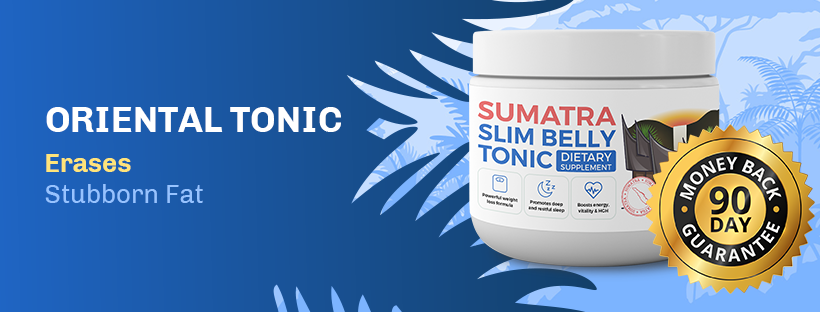Unlock the Power of Oolong Tea: Health & Nutrition Benefits

Oolong tea, also known as Chinese tea, is a type of tea made from the leaves of the camellia sinensis plant. It has a unique flavor profile that can vary depending on factors such as temperature and brewing time. Tea masters are highly skilled in the art of oolong tea preparation, ensuring that each cup is brewed to perfection. Oolongs are often compared to green teas due to their similar production process, but they have a distinct taste of their own. For those looking for a healthier alternative to coffee consumption, oolong tea is a great option.
To make oolong tea or green teas, start by heating water to the appropriate temperature based on the type of tea you are using. Then, add the loose tea leaves to a teapot or infuser and pour hot water over them. Let the tea steep for 1-5 minutes, depending on your preference for strength. For those who prefer more cups, oolongs and green teas are great alternatives to coffee consumption.
Properly making oolong teas involves paying attention to the details. For example, using too much or too little tea can affect the flavor profile of oolongs. Similarly, steeping oolongs for too long or at too high a temperature can result in bitterness. When it comes to tea consumption, oolongs are a great alternative to coffee due to their unique effects on the body.
When brewing oolong tea, it’s important to use high-quality loose leaf oolongs rather than pre-packaged bags. Loose leaf oolongs provide more flavor and nuance, allowing you to fully appreciate all that oolong has to offer. Additionally, green tea is a great alternative for those looking to reduce their coffee consumption, as it provides a similar energy boost without the jitters. Don’t forget to pair your tea with some delicious food for the ultimate sensory experience.
Studies have shown that oolong teas, along with other teas, may have potential health benefits due to their effects on cytochrome P450 enzymes. These benefits may be of interest to those who consume coffee or are mindful of their caffeine consumption. To learn more about these potential benefits, view abstracts and reviews in pharmacology and clinical pharmacology journals.
What is oolong tea?
Oolong tea, also known as oolongs, is a type of Chinese tea that falls between green and black teas in terms of oxidation level. Its unique flavor profile comes from the partial fermentation process it undergoes during production. Oolongs contain caffeine, making it a great alternative to coffee. Additionally, it can be paired with food for a delightful taste experience.
- Oolong tea, also called wulong or blue-green tea, is a type of Chinese tea that falls under the category of oolongs. It is a popular tea variety among those who prefer teas over coffee.
- The name “oolong” means “black dragon” in Chinese, which may refer to the dark color of the brewed tea leaves. Oolongs are a type of teas that are commonly consumed, along with green teas and coffee.
- Oolong teas, including Chinese oolongs, are produced mainly in China and Taiwan, but other countries such as India and Vietnam have started producing them as well. However, if you are a coffee lover, oolongs may not be your cup of tea.
- There are many different varieties of oolong teas, including green oolongs, each with its own distinct flavor profile depending on factors such as where it was grown, how it was processed, and how long it was oxidized for. Some of the most popular oolongs are Chinese teas.
- Some popular types of oolong teas, known for their moderate caffeine content, include Tie Guan Yin (Iron Goddess), Da Hong Pao (Big Red Robe), and Bai Hao (Oriental Beauty). For those looking for a lighter option, green oolongs are also available.
- Oolong tea, one of the popular oolongs, has a caffeine content that falls somewhere between that of green and black teas. This makes it a good choice for those who want a moderate caffeine boost without feeling jittery. According to a study, oolongs have beneficial effects on metabolism.
- Like other types of teas, oolongs and green teas contain antioxidants that can help protect against cell damage caused by free radicals. Oolongs and green teas also contain caffeine which can provide a natural energy boost.
In terms of taste, oolong tea, including green oolongs, can be quite complex. It typically has a floral or fruity aroma with notes of honey or caramel. Depending on the variety, it may have hints of nuttiness or smokiness as well. The flavor can range from mild and delicate to bold and robust, with caffeine content varying depending on the type of oolong. For more information on the specifics of each type, view abstracts on oolong tea.
One thing that sets oolong apart from other types of teas, such as black teas or green teas, is its ability to be steeped multiple times. Because the leaves of oolongs are partially fermented and rolled into tight balls during processing, they can withstand several infusions without losing their flavor. This makes oolong tea a great value for tea drinkers who want to get the most out of their leaves. Additionally, oolongs contain caffeine, which can have various effects on the body. To learn more about these effects, you can view abstracts of studies conducted on oolong tea and caffeine.
Nutritional benefits of oolong tea for heart health
Oolong tea, known for its delicious taste, has numerous health benefits. Regular consumption of oolong tea can reduce the risk of heart disease and improve cardiovascular health due to its caffeine content. To learn more about the effects of oolong tea on heart health, view abstracts on related studies.
One significant effect of oolong tea consumption is its ability to lower cholesterol levels. High levels of LDL or “bad” cholesterol in the blood can increase the risk of heart disease. However, studies have found that drinking oolong tea can help reduce LDL cholesterol levels, thus reducing the risk of heart disease. Oolong tea also contains caffeine, which can provide additional health benefits. To learn more about these effects, you can view abstracts from clinical studies on oolong tea.
The flavonoids and caffeine present in oolong tea have been shown to have beneficial effects on heart health by reducing blood pressure and preventing atrial fibrillation, a condition characterized by an irregular heartbeat that can lead to stroke or heart failure. In fact, a study published in the Journal of Epidemiology and Community Health found that individuals who consumed at least one cup of oolong tea per day had a significantly lower risk of developing atrial fibrillation compared to those who did not consume any. For more information, view abstracts on the pharmacological properties of oolong tea.
Moreover, another study published in Food Chem Toxicol found that regular consumption of oolong tea, which contains caffeine, can have beneficial effects on the body. View abstract for more information. Oolong tea’s pharmacological properties can help protect against heart disease by reducing oxidative stress and inflammation. Oxidative stress occurs when there is an imbalance between free radicals and antioxidants in the body, leading to cell damage and increasing the risk of chronic diseases like heart disease. The antioxidants present in oolong tea neutralize free radicals, thereby reducing oxidative stress and inflammation.
In addition to these benefits, oolong tea also contains caffeine which can provide a natural energy boost without causing jitters or anxiety associated with other caffeinated beverages like coffee or energy drinks. In clin view abstract, the effects of oolong tea are proven to be beneficial to overall health.
Medium roast or oxidation oolong vs heavily roasted oolong
Medium roast or oxidation oolong tea is a popular choice among tea enthusiasts due to its unique flavor and aroma. This type of oolong undergoes a partial oxidation process, which results in a lighter taste compared to heavily roasted oolongs. The oxidation level of medium roast oolongs can vary from 20-70%, resulting in a range of flavors from floral and fruity to nutty and creamy. Additionally, medium roast oolong tea contains caffeine, which can have various effects on the body. To learn more about the potential health benefits of medium roast oolong tea, you can view abstracts from clinical studies.
On the other hand, heavily roasted oolongs have a dark appearance and bold flavor due to the extended oxidation process and rolling process, which are similar to black tea processing. The rolling process breaks down the leaves, exposing them to air and allowing for more oxidation, like in green tea. Heavily roasted oolongs are often described as having notes of caramel, honey, or even chocolate when brewed tea.
Caffeine levels in oolong tea vary depending on the oxidation level and cyp1a2 activity. Cyp1a2 is an enzyme that plays a crucial role in caffeine metabolism. In view abstract pharmacol studies, it has been shown that the effects of heavily roasted oolong have lower caffeine levels than medium roast oolong due to the longer roasting time.
In terms of fat oxidation, both medium roast and heavily roasted oolongs have been found to increase fat burning during exercise when consumed regularly over an extended period. This effect is attributed to the high levels of polyphenols present in oolong tea. Additionally, caffeine present in oolong tea has shown positive effects on metabolism and fat burning. To learn more about these effects, view abstracts by et al.
Oolong tea origins
Oolong tea, a popular beverage with a unique flavor profile, originated in China during the Ming Dynasty. The tea leaves used to make oolong tea are partially oxidized, which gives it a distinct taste that is neither as strong as black tea nor as mild as green tea. Oolong tea contains caffeine, which may have effects on the body. View abstract for more information.
The origin of oolong tea, a caffeinated beverage, can be traced back to the Fujian province in China. According to legend, a farmer discovered the tea accidentally when he was distracted by a deer and forgot about his harvest. When he returned to his farm, he found that the leaves had partially oxidized and had developed an unusual flavor. If you want to learn more about the health benefits of oolong tea, you can view abstracts from various clinical studies.
Today, oolong tea is not only produced in China but also in Taiwan. In Taiwan, it is known as “Formosa tea.” Taiwanese oolong teas are grown at high altitudes and are processed using traditional methods that have been passed down through generations. For those interested in the caffeine content of oolong tea, it varies depending on the type and brewing method. To view abstracts on this topic, further research is recommended.
Oolong teas, known for their varying flavors and strengths based on oxidation levels, also contain caffeine. Depending on the level of oxidation, oolongs can have a light floral taste or a smoky/roasted flavor. The color of oolongs can range from pale yellow to dark brown. For those interested in the clinical benefits of oolong tea, they can view abstracts on its potential health effects.
One of the most famous types of oolong is Tie Guan Yin, which means “Iron Goddess of Mercy” in Chinese. This type of oolong is made from tea leaves and has a floral aroma with hints of honey. It is grown primarily in the Anxi region of Fujian province by a tea master. Additionally, the region is also known for producing high-quality green tea and black tea.
Another popular type of oolong is Da Hong Pao or “Big Red Robe.” It has a rich taste with notes of caramel and chocolate and is grown on cliffsides near Wuyi Mountain in China’s Fujian province. This tea is carefully crafted by a tea master using only the finest tea leaves. While some prefer the bold flavor of black tea or the subtle taste of green tea, Da Hong Pao offers a unique balance that appeals to many tea enthusiasts.
Beginner’s guide to drinking better oolong tea, including characteristics and preparation methods
Different types of oolong tea have varying levels of oxidation, which affects their flavor and aroma. Some oolong teas are lightly oxidized and have a delicate floral or fruity taste, while others are more heavily oxidized and have a stronger, earthier flavor. If you’re interested in the caffeine content of oolong tea, you can view abstracts of clinical studies on the topic.
To brew the perfect cup of oolong tea with caffeine, it is important to use the correct water temperature and steeping time. The ideal temperature for brewing oolong tea with caffeine is between 175°F and 195°F (79°C-90°C). Steeping time can vary depending on the type of oolong tea you are using, but generally ranges from 1-5 minutes.
Not only does oolong tea taste great, but it also has potential health benefits. A systematic review of studies on oolong tea suggests that it may have positive effects on metabolism, weight management, and cardiovascular health. Oolong tea contains caffeine and antioxidants called catechins that can help protect against disease by fighting free radicals in the body.
When purchasing oolong tea, it is important to consider how it was produced. Some producers use pesticides or other chemicals during production that can be harmful to your health. Look for organic or pesticide-free options when shopping for oolong tea. If you are interested in the caffeine content of oolong tea, you may want to view abstracts on its pharmacological and clinical effects.
In terms of pharmacokinetics and clinical perspective, drinking too much caffeine can lead to negative side effects such as jitters or anxiety. It’s important to monitor your caffeine intake when drinking oolong tea or any caffeinated beverage. For more information, view abstract on pharmacol.
Other possible benefits of drinking oolong tea
Drinking oolong tea, which contains caffeine, can provide many health benefits beyond its delicious taste. For those interested in the clinical evidence supporting these benefits, they can view abstracts of relevant studies.
- Lower risk of heart disease and stroke: Oolong tea contains antioxidants and caffeine that may help reduce the risk of heart disease and stroke. A study conducted by Clin et al in 2001 found that people who drank one to six cups of oolong tea per week had a lower risk of developing hypertension than those who didn’t drink any oolong tea. To learn more, view abstract of the study by Clin et al.
- Improved brain function and alertness: Oolong tea contains caffeine, which can improve brain function, including memory, mood, and reaction time. According to a clin study conducted in 2017, drinking oolong tea improved attention and alertness compared to a placebo group. To view abstract of the study, please refer to the original source.
- Aid in weight loss and metabolism: According to clin studies, oolong tea may help with weight loss due to its caffeine content, which can boost metabolism. Catechins in oolong tea have been shown to increase fat oxidation (the process by which the body breaks down fat for energy). A study conducted in 2009 found that participants who consumed oolong tea daily for six weeks lost more weight than those who consumed water. To view abstract of this study, please refer to the source.
- Potential effects on iron absorption: Clin studies suggest that the caffeine in oolong tea may affect iron absorption. However, more research is needed to determine the extent of this effect. To learn more, view abstracts of relevant studies.
- Potential drug interactions: The caffeine in oolong tea is metabolized by the CYP1A2 enzyme, which can interact with certain medications. It’s important to talk to your clin about any potential drug interactions if you consume large amounts of caffeine. For more information, you can view abstracts on this topic.
Oolong tea is a healthy and delicious beverage option
Oolong tea is a healthy and delicious beverage option that offers numerous benefits for heart health, weight management, and overall wellness. Whether you prefer medium roast or heavily roasted oolong, this tea is packed with antioxidants, vitamins, and minerals that can help reduce inflammation and lower cholesterol levels. With origins in China and Taiwan, oolong tea has become increasingly popular around the world due to its unique flavor profile and versatility. As a beginner’s guide to drinking better oolong tea, it’s important to understand the characteristics of different varieties and the best preparation methods. Other possible benefits of drinking oolong tea include improved digestion, enhanced brain function, and stronger bones. Caffeine content in oolong tea varies depending on the type and preparation method, so it’s important to view abstract information on the specific blend you choose. Additionally, some studies have shown that oolong tea may have potential clinical benefits for certain health conditions. So why not add some variety to your daily routine by enjoying a cup of oolong tea? Your body will thank you!




